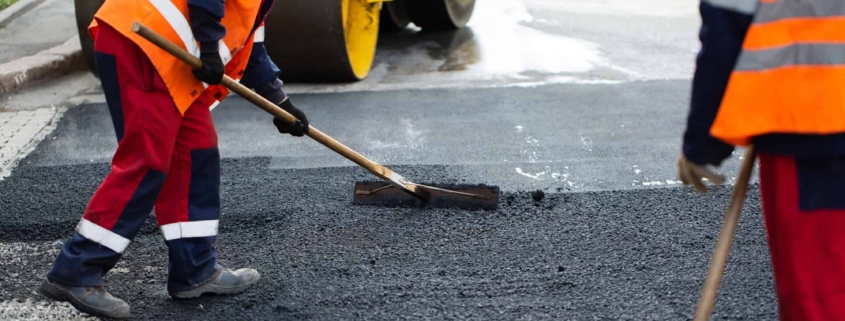Signs You Need Asphalt Maintenance and Repair
Asphalt is a versatile and durable material widely used in the construction of roads, parking lots, driveways, and more. However, like any material exposed to the elements and heavy use, asphalt can experience wear and tear over time. This degradation can lead to a range of issues that, if left unchecked, can cause significant damage, increase repair costs, and compromise safety.
Recognizing the signs of asphalt problems early is crucial for preventing further deterioration. Proper maintenance and timely repairs not only enhance the lifespan of asphalt surfaces but also improve aesthetics and ensure safety.
In this blog, we explore signs you need asphalt maintenance and repair services and discuss the best approaches to addressing these issues.
Different Signs You Need Asphalt Maintenance and Repair
By recognizing the following signs of asphalt damage early and addressing them quickly, you can prevent more extensive asphalt repairs and extend the lifespan of your surfaces:
Cracks in the Surface
One of the most common signs that your asphalt surface needs attention is the appearance of cracks. Cracks can vary in size, from small hairline fractures to larger fissures that extend across the surface.
These cracks may appear due to several factors, including:
- Age: Over time, asphalt naturally begins to age and lose its flexibility, which makes it more susceptible to cracking.
- Weather: Extreme temperature fluctuations, especially freeze-thaw cycles, can cause asphalt to expand and contract, leading to cracks.
- Heavy Traffic: Frequent and heavy traffic loads can stress the asphalt, causing it to crack, especially if the surface is not properly maintained.
- Water Damage: Water infiltration through cracks can weaken the underlying layers, causing further damage.
Small cracks can be easily filled with crack filler, but larger cracks require more extensive repair, such as resurfacing or patching.
Potholes
Potholes are one of the most severe and dangerous forms of asphalt damage. These depressions in the asphalt occur when water seeps into cracks, freezes, and thaws, causing the asphalt to break apart and collapse. Potholes can also form due to poor installation, improper drainage, or the repetitive stress of heavy vehicles. They can be a serious hazard to vehicles and pedestrians alike.
If left unaddressed, potholes can grow larger and cause further damage to the surrounding area. Repairing potholes involves removing the damaged asphalt, cleaning the area, and filling it with new material. In severe cases, full resurfacing may be necessary to restore the surface.
Raveling
Raveling refers to the gradual deterioration of the surface layer of asphalt. It occurs when the aggregate (the small stones within the asphalt) begins to loosen and separate from the binder (the sticky substance that holds the aggregate together). Raveling can be caused by a variety of factors, including:
- Heavy traffic: Continuous heavy traffic can wear down the top layer of asphalt.
- Weather: Prolonged exposure to harsh weather conditions, such as excessive heat or moisture, can accelerate the raveling process.
- Poor construction or installation: If the asphalt is not properly mixed or applied, it can lead to premature raveling.
As the surface becomes rougher and more uneven, it may also lose its skid resistance, leading to an increased risk of accidents. To address raveling, the affected areas may need to be resurfaced or, in some cases, fully replaced.
Alligator Cracking
Alligator cracking is a specific pattern of cracks that form in the shape of an alligator’s scales. These cracks are usually a result of structural failure, where the base or subgrade beneath the asphalt becomes compromised. Alligator cracking typically occurs in areas with heavy traffic or where the subgrade has weakened due to water infiltration or poor installation.
This type of cracking is often an indication that the asphalt has reached the end of its useful life. Repairing alligator cracks typically requires more extensive measures, such as patching or resurfacing the area. In some cases, it may be necessary to remove and replace the entire section of asphalt to ensure structural integrity.
Surface Fading and Discoloration
Asphalt naturally darkens when it is first installed, but over time, it can begin to fade and show signs of discoloration. The fading of asphalt is often caused by prolonged exposure to sunlight, UV rays, and weather conditions. While surface fading doesn’t necessarily indicate structural damage, it can affect the aesthetic appeal of the surface.
If your asphalt surface has faded significantly, it may benefit from a sealcoating treatment. Sealcoating is a protective layer applied to the surface to restore its appearance, protect against UV damage, and improve water resistance. Sealcoating can also help prevent cracks and raveling by providing a barrier against the elements.
Standing Water
If you notice that water is not draining properly from your asphalt surface and tends to pool in certain areas, this could be a sign of underlying drainage issues. Standing water is often a result of poor grading or a failure in the drainage system. Over time, standing water can seep into cracks and cause the asphalt to soften and break down, leading to more serious damage, such as potholes and alligator cracking.
To prevent this, ensure that the asphalt surface is properly graded, with a slight slope to direct water toward drainage channels. If the issue persists, it may be necessary to repair or replace the damaged drainage system to prevent further deterioration.
Rough and Uneven Surface
A rough or uneven asphalt surface can be caused by a variety of factors, such as settlement of the subgrade, heavy traffic, or extreme weather conditions. Over time, the surface can become bumpy or uneven, leading to a rough driving experience. Not only can this be uncomfortable, but it can also cause damage to vehicles over time.
If the unevenness is severe, resurfacing or patching may be required to restore the smoothness of the surface. In cases where the subgrade has settled, additional work may be needed to address the underlying foundation before resurfacing can take place.
Surface Bleeding
Surface bleeding occurs when the binder material in the asphalt rises to the surface, creating a shiny or sticky appearance. This is often caused by an excessive amount of bitumen in the mix or overheating during the asphalt production process. Surface bleeding can be a safety hazard, especially in hot weather, as it can create a slippery surface that is prone to accidents.
To repair surface bleeding, the affected area may need to be milled down to remove the excess binder and then resurfaced with fresh material.
Learn how to maintain and extend the life of your freshly resurfaced asphalt with our top seven maintenance tips for businesses and homes.
Learn More
How to Address Asphalt Maintenance and Repair Issues
Once you’ve identified the signs of damage, it’s important to take swift action to address the issue and prevent further deterioration.
Here are some common methods of asphalt maintenance and repair:
Crack Filling
Crack filling is an essential part of asphalt maintenance, especially when dealing with small cracks. Using a specialized filler, the cracks are sealed to prevent water infiltration and stop the damage from spreading.
Pothole Repair
Potholes can be repaired by removing the damaged asphalt, preparing the area by cleaning it, and filling it with fresh asphalt material. Once filled, the area should be compacted to restore structural integrity.
Sealcoating
Sealcoating is a preventive measure that provides an extra layer of protection against UV rays, water, and general wear and tear. It also enhances the appearance of the surface, restoring its dark color and smooth texture.
Resurfacing
If the damage is more extensive, resurfacing may be necessary. This process involves applying a new layer of asphalt over the existing surface, effectively renewing the road or driveway and extending its life.
Full Replacement
In cases where the damage is too severe or widespread, full asphalt replacement may be required. This involves removing the old asphalt and laying down a new base and surface layer to restore the area to a like-new condition.
Taking Care of Your Asphalt Maintenance and Repair Needs
Whether it’s filling cracks, patching potholes, or seal coating, maintaining your asphalt surface is a wise investment that can save you money and improve safety in the long run. At Phillips Paving, we offer comprehensive asphalt repair and maintenance services designed to extend the lifespan of your surfaces and enhance their appearance. Our expert team specializes in crack filling, pothole repair, seal coating, resurfacing, and full asphalt replacements, ensuring that your driveway, parking lot, or roadway remains safe, smooth, and durable for years to come. Contact us today to get a quote.




